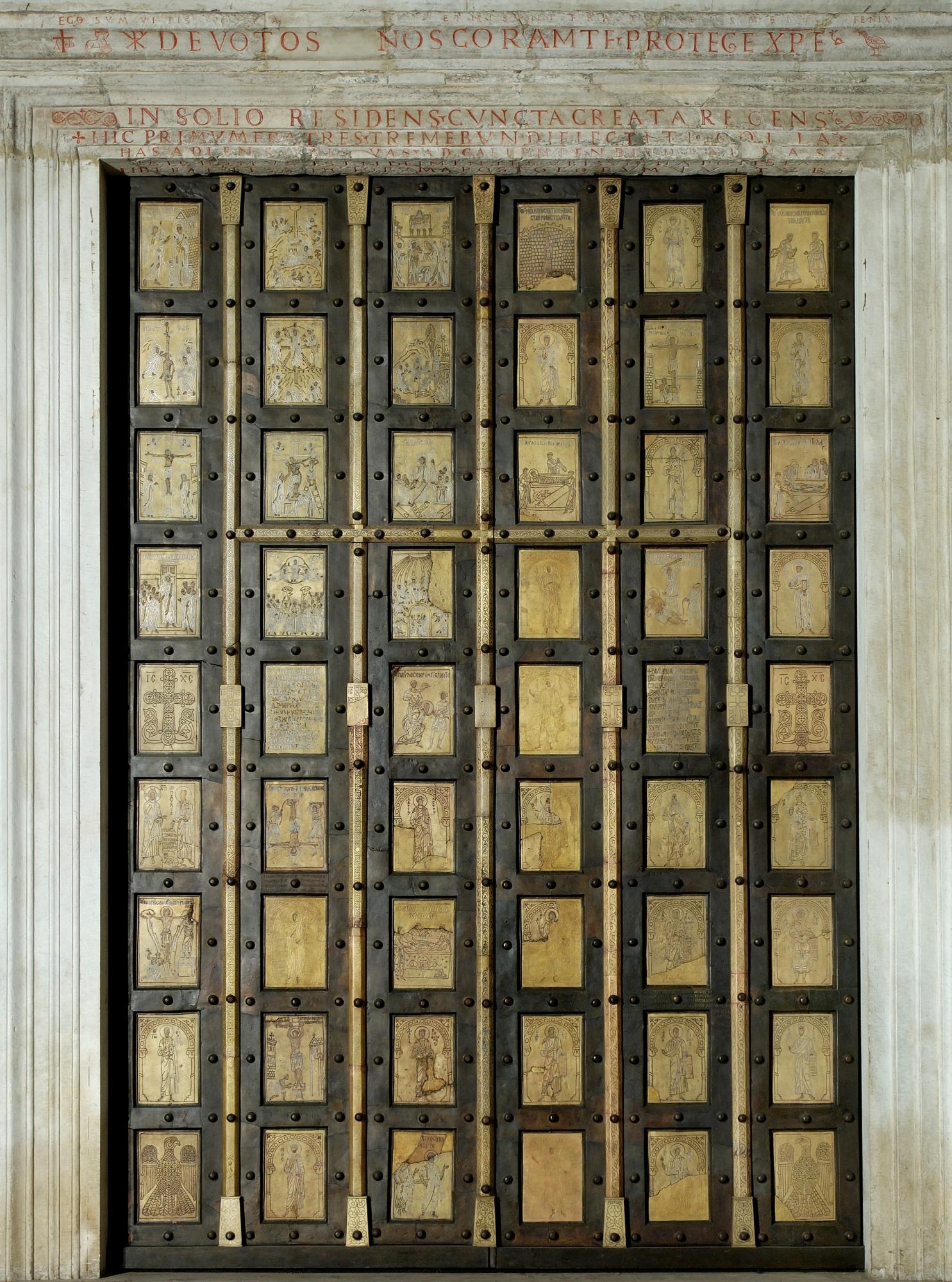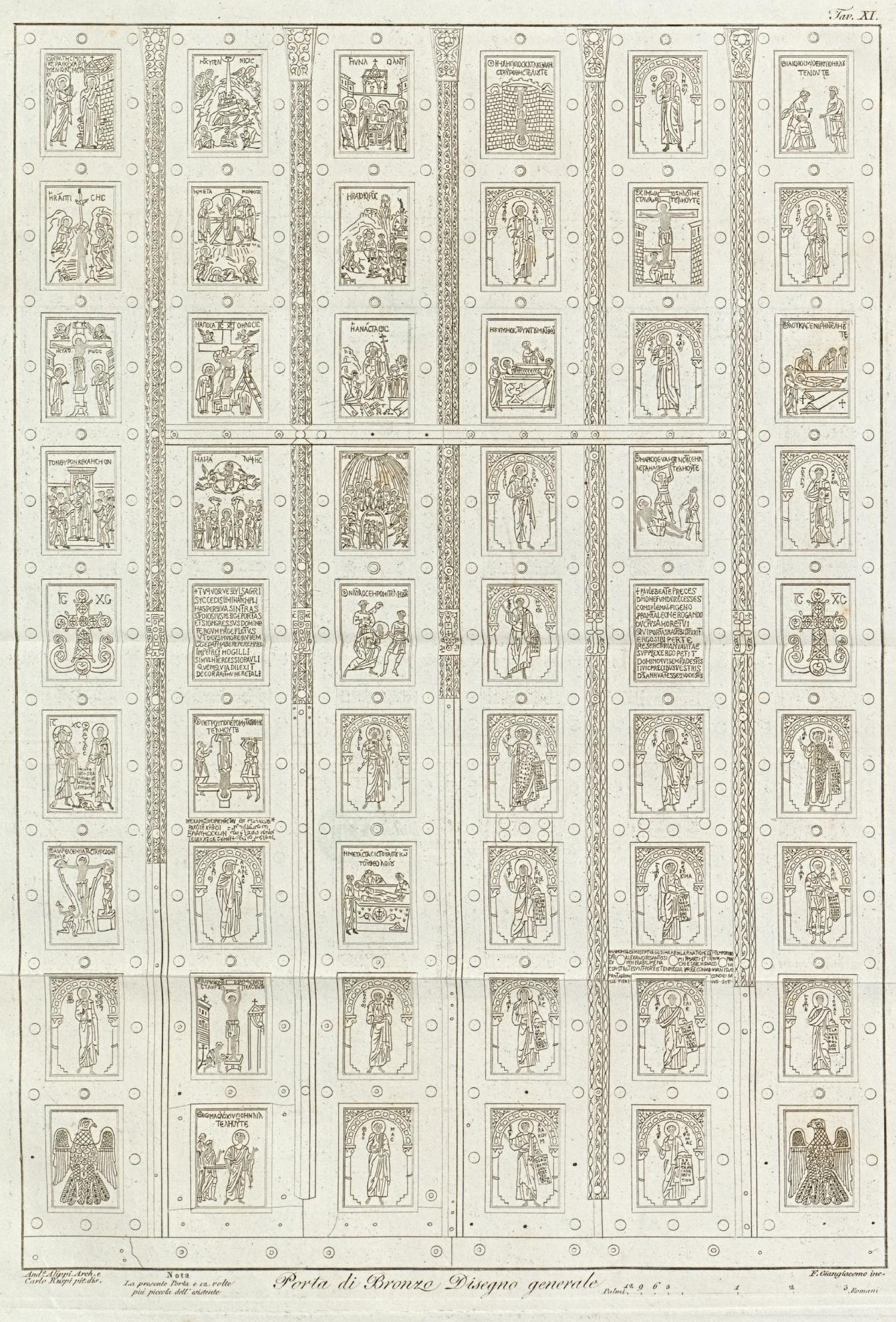The monumental gate of St. Paul Outside the Walls (5 x 3.42 m) was constructed in Constantinople in 1070, commissioned by Consul Pantaleone de Comite Maurone, a member of a wealthy lineage of Amalfi merchants who amassed their fortune through trade with Byzantium. From the second half of the 11ᵗʰ century onwards, eight doors crafted in Constantinople were brought to Italy, offering a valuable testament to the metallurgical production of the Eastern capital. In addition to the door of St. Paul Outside the Walls, the noble de Comite Maurone family’s generous commissioning efforts are also linked to the creation of three other doors, intended for the cathedral of Amalfi, the abbey church of Montecassino, and the sanctuary of Monte Sant'Angelo.
Designed to close the main entrance of the basilica, the door features two leaves and is constructed with a frame supporting fifty-four panels, which lack relief elements. The arrangement of these panels has been altered several times over the years. Each panel (40 x 28 cm), individually cast and mounted on a wooden support, is made of orichalc, a metal alloy similar to brass. The agemina decoration, once applied with delicate silver threads along the grooves outlining figures, ornaments, and other elements, has nearly disappeared, leaving behind only traces of the elegant chromatic contrast it once created against the gilded background.
The iconographic layout of the door includes not only decorative and symbolic elements but also scenes from the life of Christ, representations of prophets, apostles, and their martyrdoms. In shaping this intricate program, which highlights the apostolic phase of the Church, a significant influence likely came from the prepositus of St. Paul’s Abbey, Ildebrando di Soana, who later became Pope Gregory VII (1073-1085).












